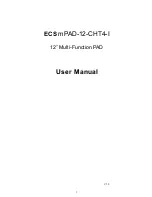
51
Utility Mode
This mode sets general parameters for the DTXPRESS
system and MIDI.
■
Enter the Utility Mode
Press the [UTIL] button on the front panel.
Once the Utility Mode is entered, the System Group main page
(LearnMode) shown below will be displayed.
UT
SYSTEM
LearnMode=allwys
* Double-click the [UTIL] button to enter the Utility Mode. The [4-
1. Equalizer (EQ)] display will appear.
■
What’s in the Utility Mode
The Utility Mode is divided into the 5 sub-groups listed below.
1. SYSTEM Group ................................. (
m
P. 52)
Contains various settings that affect the entire
DTXPRESS system.
2. MIDI Group ........................................ (
m
P. 53)
Contains various settings for the DTXPRESS’
MIDI and TO HOST functions.
3. SEQ (Sequencer) Group .................. (
m
P. 56)
Contains various settings that apply to the
DTXPRESS’ sequencer (song).
4. TG (Tone Generator) Group ............. (
m
P. 58)
Contains various settings that apply to the
DTXPRESS’ tone generator.
5. MAP (Drum Map) Group ................... (
m
P. 59)
Used to edit the User Drum Map.
How to set…
1.
Press the [UTIL] button to enter the Utility Mode.
2.
Select the sub-mode.
• Press the [UTIL] button to move to the next sub group’s main
page.
• Use the [PAGE
▲
], [PAGE
▼
] buttons to move to page by page
within the selected sub group. You can use these buttons to
navigate through all of the pages (from the first System Group
main page to the last MAP Group page).
3.
Use the [SEL
<
], [SEL
>
] buttons to move the cursor to
the setting you want to change. The value will flash.
* If there is only one parameter, it is not necessary to move the
cursor.
4.
Use the [VALUE–] and [VALUE+] buttons to set the
parameter’s value or ON/OFF setting.
Any settings made in the Utility Mode will directly change
the memory settings of the DTXPRESS. There is no store
function in this mode.
Utility Mode Function List
Page
1. SYSTEM Group ......................................................... 52
1-1. Learn Mode ..................................................... 52
1-2. Trigger Bypass ................................................. 52
1-3. Volume Mode .................................................. 52
1-4. Jump to Recent Page ...................................... 52
1-5. Hi-Hat Offset .................................................... 53
1-6. Factory Set ...................................................... 53
2. MIDI Group ................................................................ 53
2-1. Bulk Dump ....................................................... 53
2-2. Channel 10 Program Change/
Channel Event Receive ................................... 54
2-3. Receive Program Change/
System Exclusive Messages ........................... 54
2-4. Program Change Table .................................... 55
2-5. MIDI Mode ....................................................... 55
2-6. Device Number, Local Control ......................... 55
2-7. MIDI Merge ...................................................... 55
2-8. Dump Interval .................................................. 56
2-9. Send Hi-Hat Control ........................................ 56
2-10. Host Thru Port ................................................. 56
3. Sequencer Group ..................................................... 56
3-1. Click Voice ....................................................... 56
3-2. Click Tune ........................................................ 57
3-3. Click Note Number .......................................... 57
3-4. MIDI Control .................................................... 57
3-5. Count Switch ................................................... 57
3-6. Sync Mode ...................................................... 57
3-7. Use Tempo ...................................................... 58
3-8. Click Mode ....................................................... 58
4. TG (Tone Generator) Group ..................................... 58
4-1. Equalizer (EQ) ................................................. 58
4-2. Tuning .............................................................. 58
4-3. Volume ............................................................ 58
4-4. Reverb Bypass ................................................ 59
5. MAP (Drum Map) Group ........................................... 59
5-1. Voice ................................................................ 59
5-2. Volume, Pan .................................................... 60
5-3. Tuning .............................................................. 60
5-4. Layer Balance .................................................. 60
5-5. Decay, Cutoff Frequency ................................. 60
5-6. Reverb Send .................................................... 60
5-7. Alternate Group, Key Assign Mode ................. 61
5-8. Key Off Enable ................................................ 61
5-9. Map Copy ........................................................ 61
Summary of Contents for DTXPRESS
Page 1: ...DRUM TRIGGER MODULE Owner s Manual ...
Page 62: ...62 MEMO ...




































